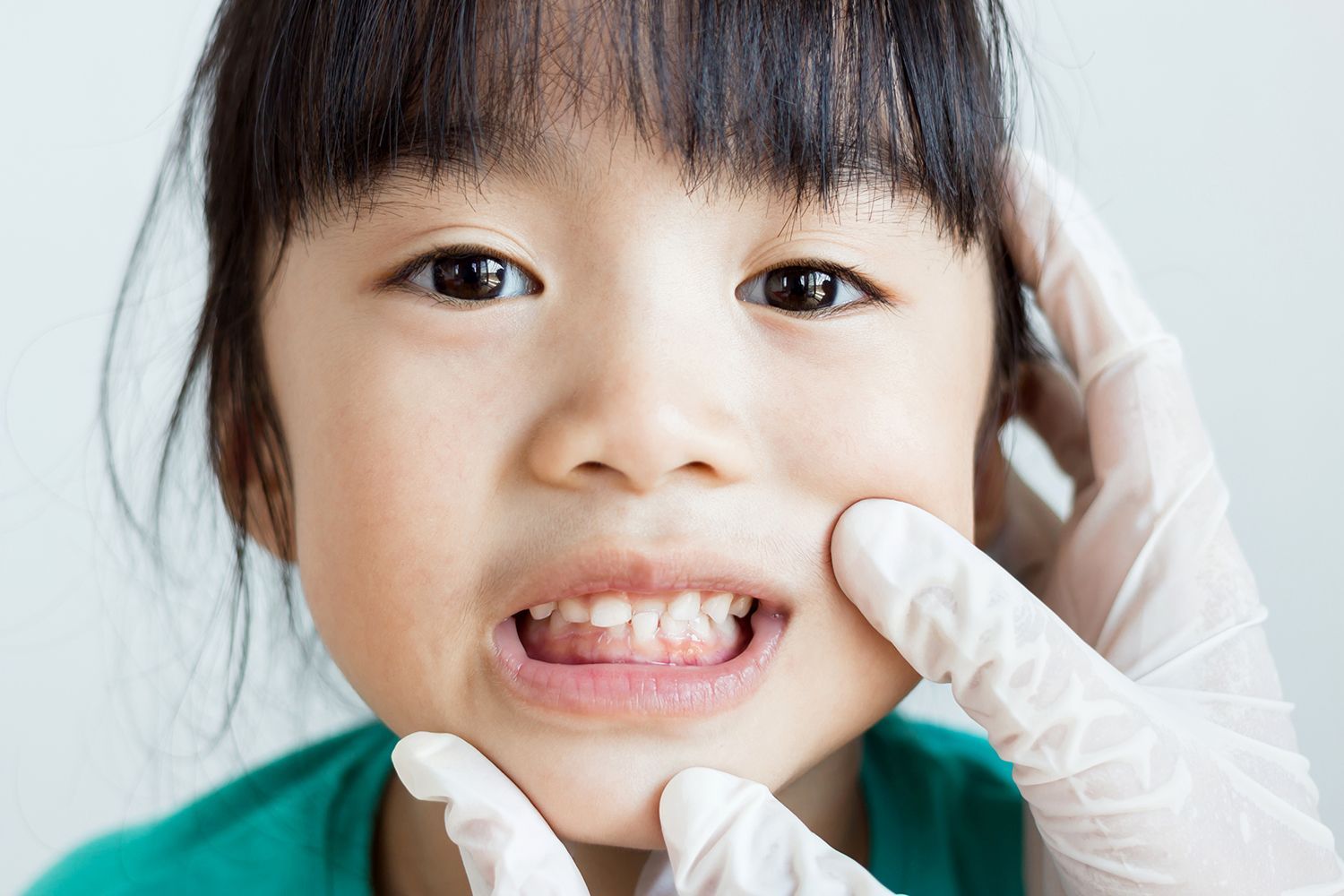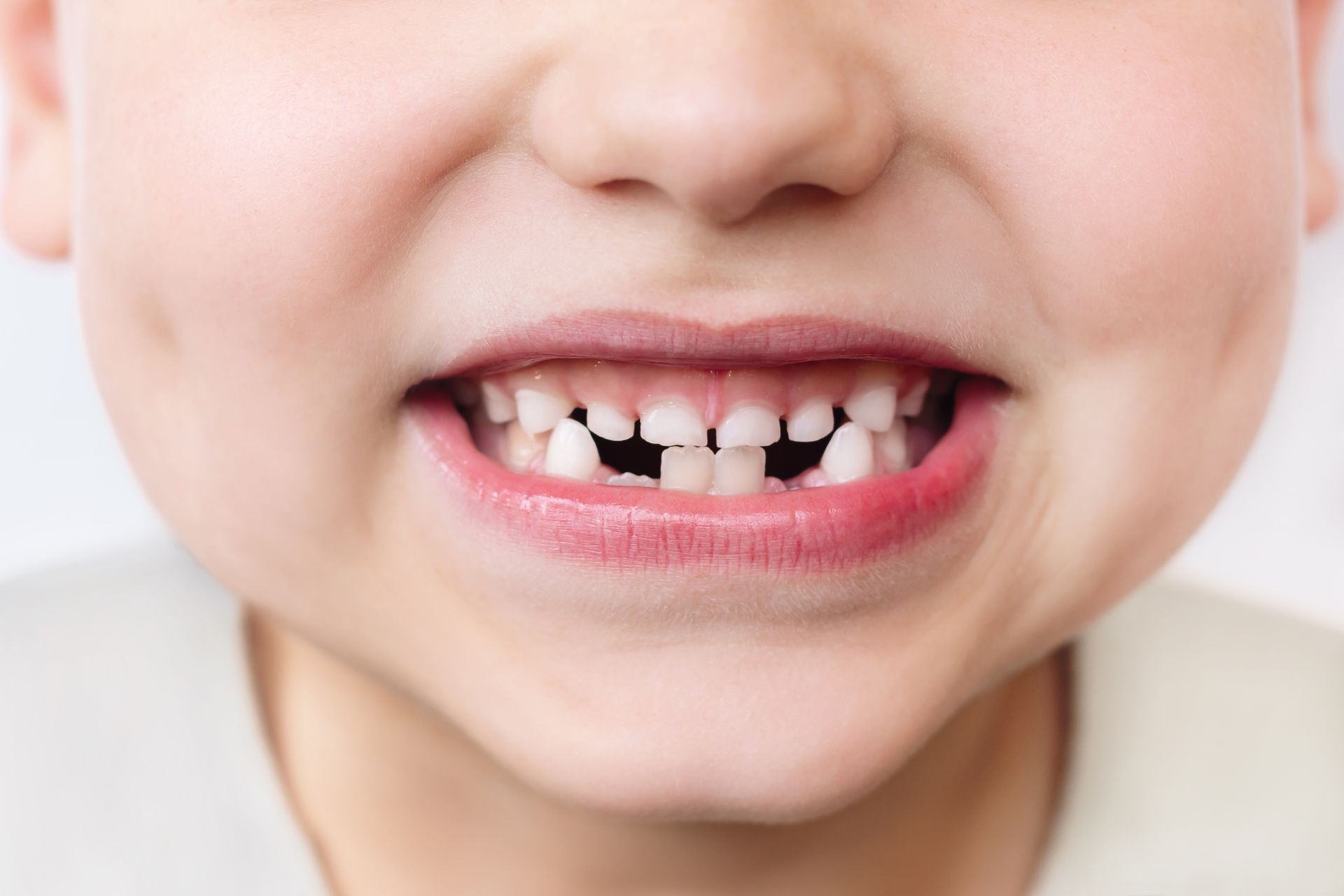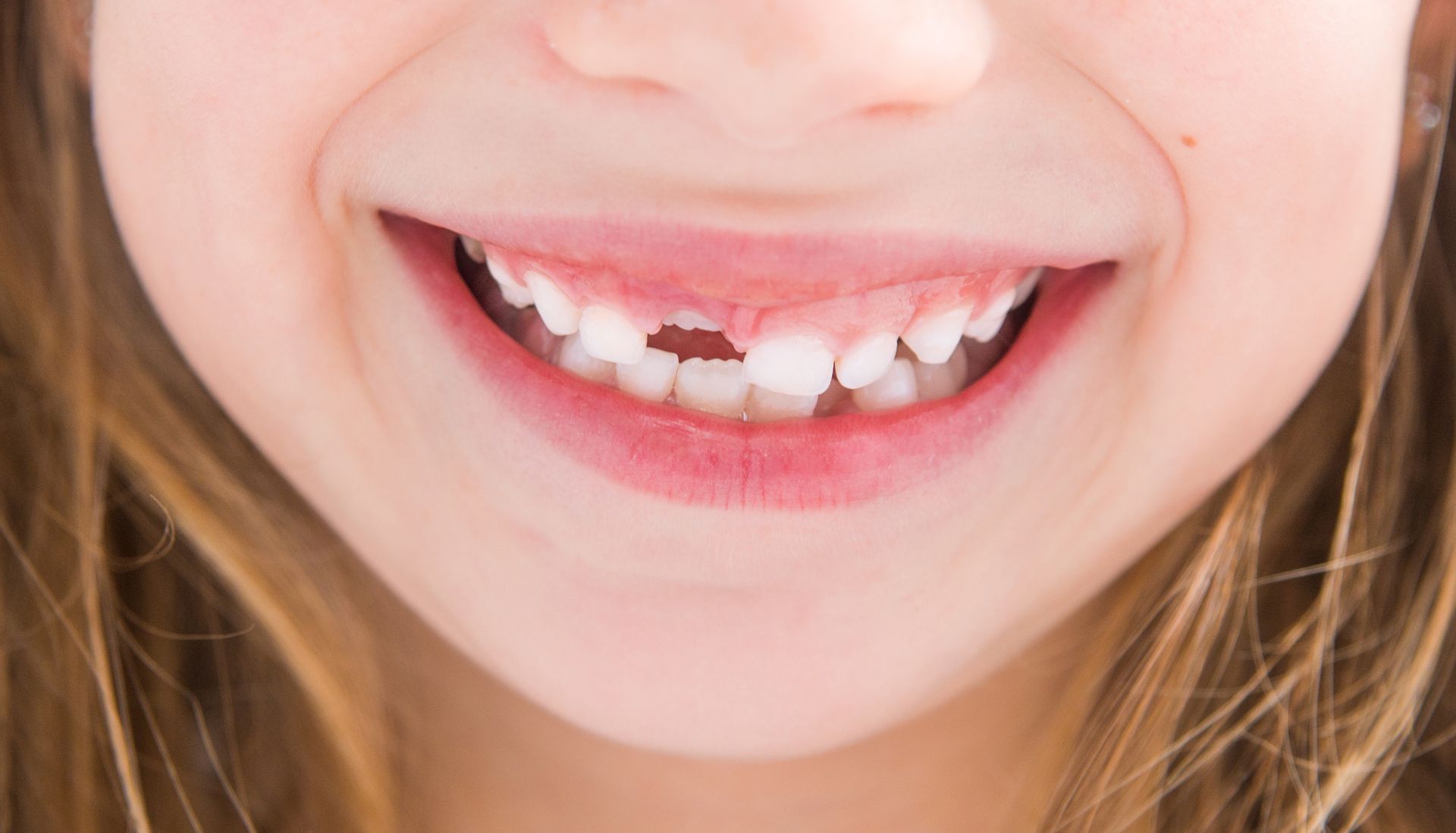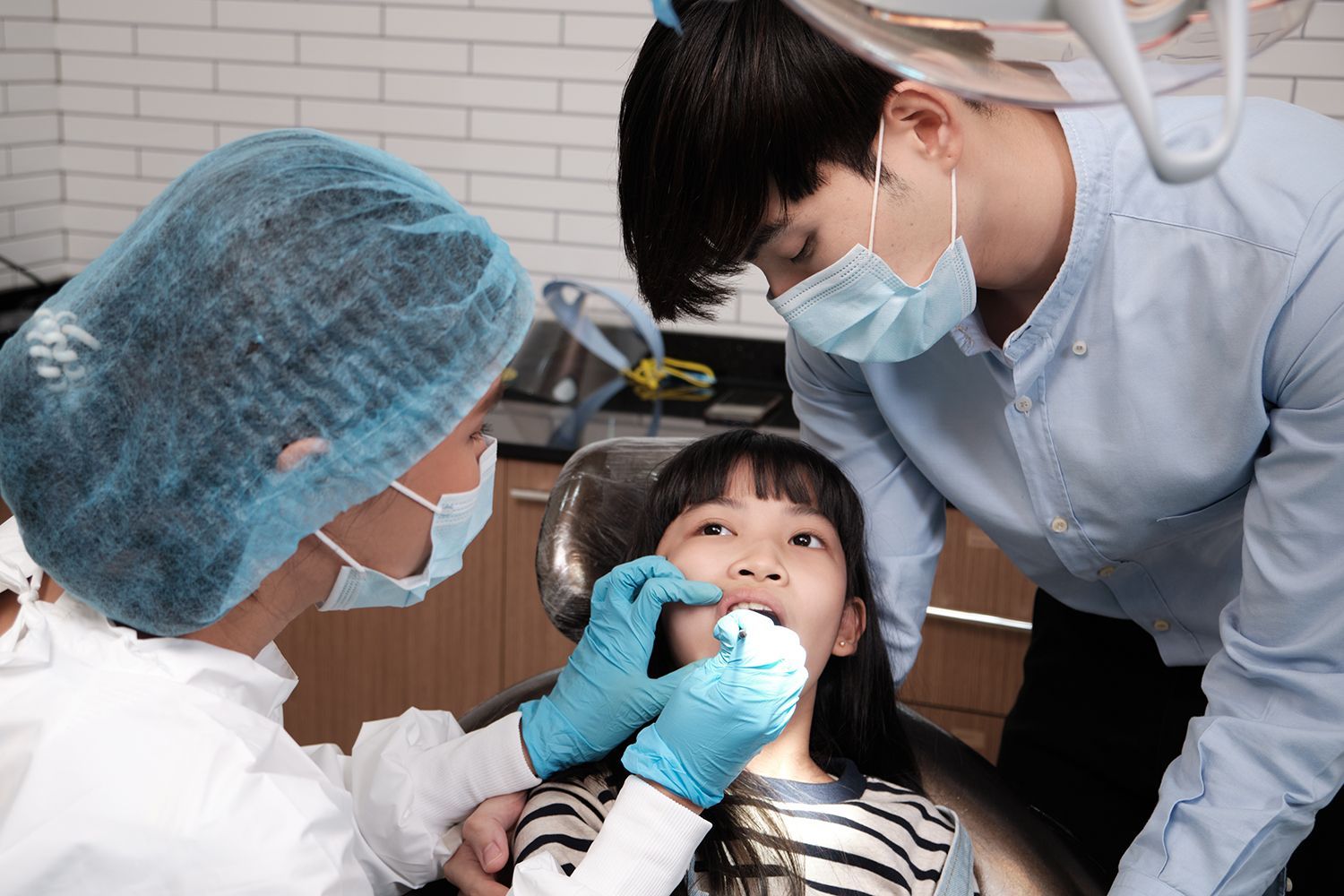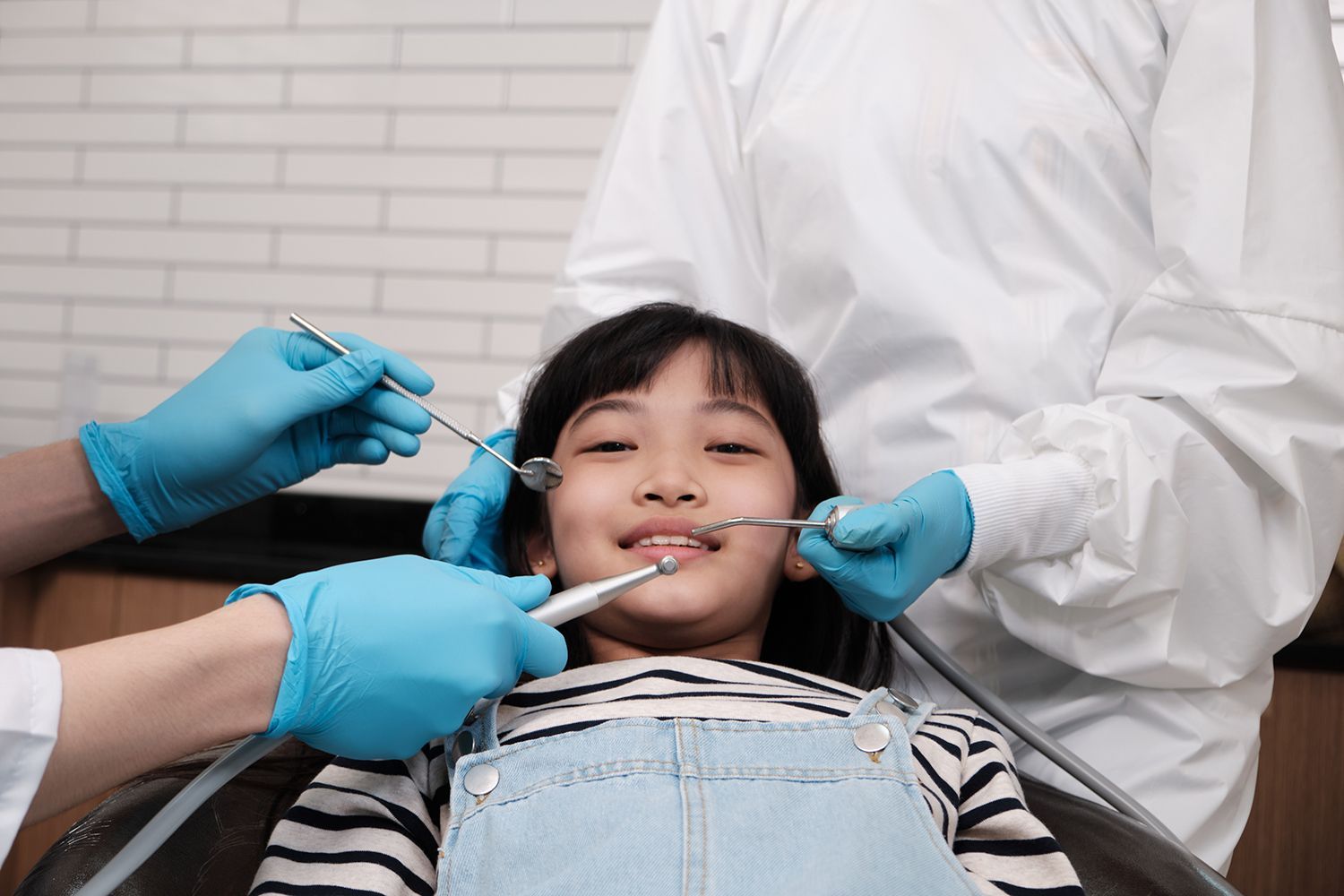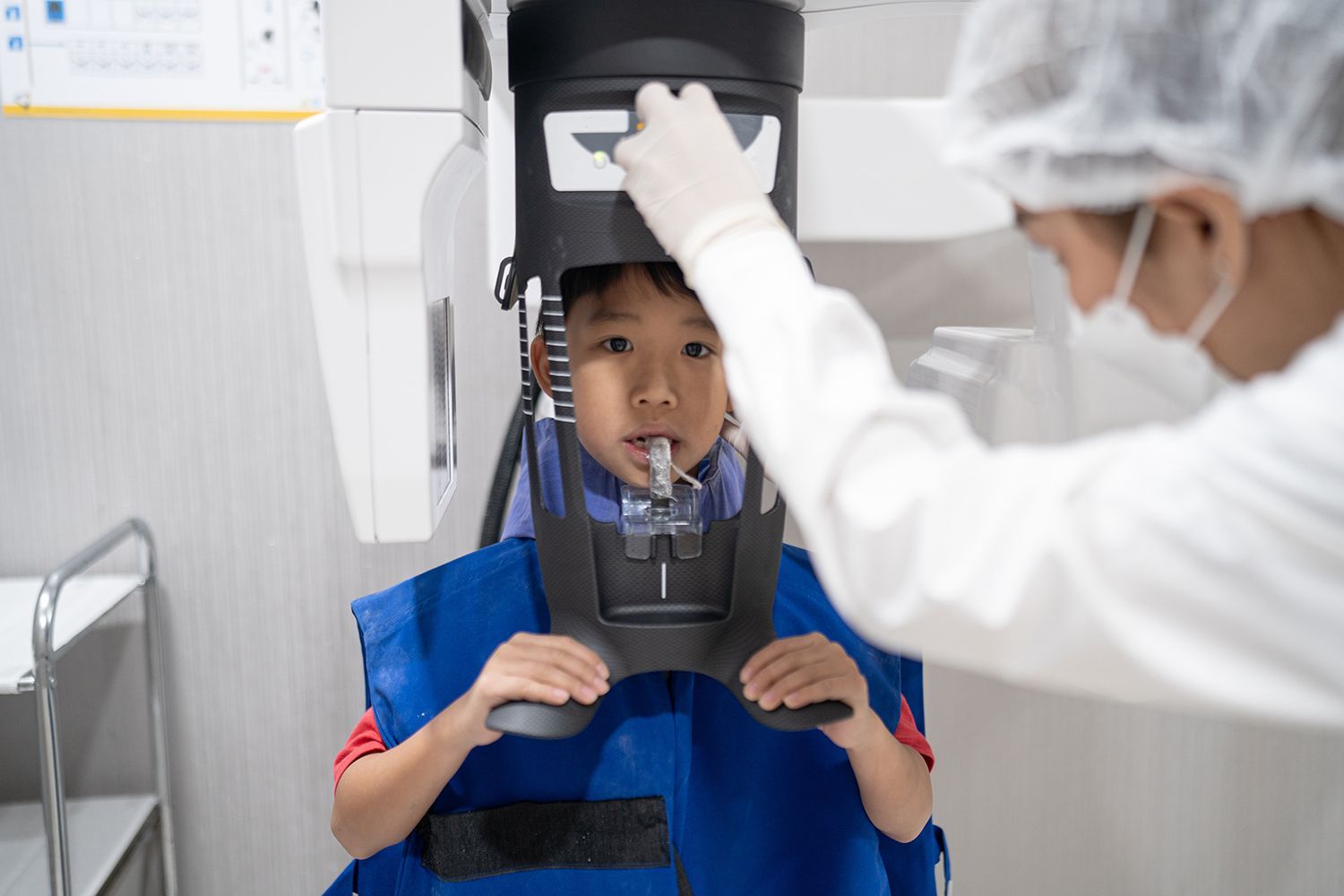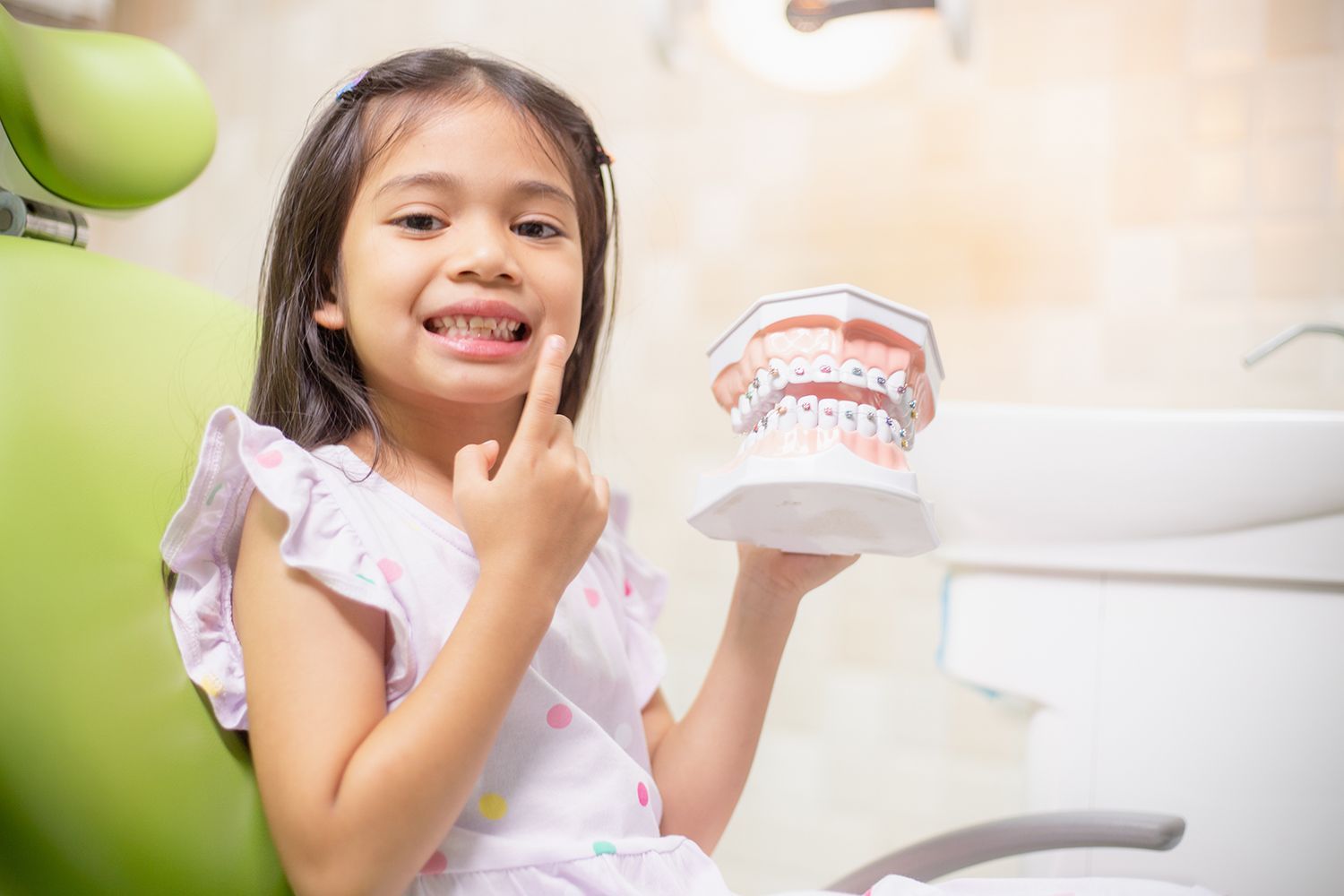Orthodontic Treatment for Children
Phase ONE Orthodontic Care and Dento-Facial Orthopaedics (Ages 5 to 10)
儿童早期正畸检查的意义:预防未来的重大正畸干预
Having an early orthodontic evaluation is essential for children to ensure optimal oral health and well-aligned teeth as they continue to develop. By addressing any potential dental issues during the stage known as mixed dentition, it allows for timely intervention that can prevent the need for more complicated orthodontic treatments in the future. At Dr. Catherine Lee Orthodontics, we believe in early diagnosis and treatment. We strongly recommend children have their first orthodontic evaluation between ages five and seven by a child orthodontist.
Signs Your Child Needs Early Orthodontic Treatment
Some symptoms of an underlying dental condition include:
- Early or late loss of baby teeth
- New teeth are coming through abnormally
- Pain or difficulty in chewing or biting
- Thumb or finger sucking
- Constant mouth breathing
- Teeth that aren’t meeting properly
- Speech problems
- Crowded or misplaced teeth
- Facial imbalance or asymmetry
- Shifting or noisy jaws
- Frequent biting of the cheek or the roof of the mouth
了解过渡阶段:混合牙列阶段
混合牙列阶段通常发生在 5 到 10 岁之间,儿童的乳牙和恒牙同时长出。这是牙齿矫正医生评估任何潜在牙齿矫正问题并采取积极措施防止其恶化的关键时期。
Benefits of Early Orthodontic Treatment for Children
Going to an orthodontist early opens a myriad of options for a young child. Having early intervention in the form of appliances such as face masks, headgear, and expander plates may completely remove the need for getting extensive treatment with braces or aligners later in life.
Because the younger patients are still in the process of facial growth, it is much easier to make alignment adjustments to their teeth and jaws as a specialist orthodontist can use this to their aid.
By the time they have reached adulthood, the bones of the adults are hardened, and the tissues around the teeth are set in with the teeth’s current positions. This may require more extensive or sometimes even surgical treatment.
Children, on the other hand, are still young and developing, so their teeth have not been worn down as they have aged. An orthodontist can focus their care on perfecting their bite as opposed to merely creating a functional bite.
Read more:
早期阻断性正畸治疗:将问题扼杀在萌芽状态
尽早接受正畸治疗有几个好处。其中一个主要好处是,正畸医生可以发现和治疗各种牙齿问题,如牙齿拥挤、间距问题、交叉咬合、咬合过大、咬合过小和颌骨错位。通过在这一阶段进行干预,正畸医生可以使用预防性方法有效地影响牙齿和颌骨的生长和排列。这种积极主动的方法有助于将牙齿矫正问题的严重程度降到最低,并减少日后需要进行广泛治疗的可能性。
常见问题
促进正确的口腔习惯
及早接受新加坡儿童正畸医生的评估还有助于发现和解决有害的口腔习惯,如吮吸拇指和伸舌头,众所周知,这些习惯会导致牙齿错位。通过尽早解决这些习惯,正畸医生可以引导儿童养成更健康的口腔习惯,从而支持牙齿的正常生长。
增强面部美感和自信心
在早期阶段解决牙齿矫正问题对儿童的外貌和自尊都会产生重大影响。在青少年时期解决这些问题,可以使面部更加和谐,并增强他们的自信心。对牙齿矫正的早期干预不仅仅是排列牙齿那么简单,它还对青少年的整体美感和情感健康做出了积极的贡献。
减少对侵入性干预的需求
早期牙齿矫正评估和治疗的一个好处是有机会减少日后对侵入性牙科手术的需求。通过在早期阶段解决牙齿问题,儿童将来就有可能避免拔牙、手术或漫长的正畸治疗。这不仅使他们免于不必要的不适,还有助于降低广泛干预的相关费用。早期干预可以及时纠正问题,促进最佳口腔健康,而无需采取更激进的措施。
让儿童尽早接受正畸医生的评估对于确保牙齿正常发育和预防未来问题至关重要。通过在混合牙阶段发现任何问题,正畸医生可以及时进行干预治疗。这种干预在引导牙齿和颌骨的排列、纠正有害的口腔习惯,甚至改善儿童面部美观方面发挥着至关重要的作用。当父母在这个阶段优先考虑孩子的牙齿健康时,他们就为孩子一生拥有健康的牙齿和美丽的笑容做好了准备。请放心,我们的正畸前指导计划将重点放在保障您孩子的牙齿健康上。
通过早期正畸治疗实现经济高效的计划生育
Incorporating early orthodontic treatment into family planning is a wise financial decision, especially when there are multiple children with potential orthodontic needs. Identifying familial orthodontic trends, treating multiple siblings simultaneously, and preventing future complications through early intervention can lead to substantial cost savings for the whole family.
What Happens During An Orthodontic Check-Up?
Consistent check-ups will enable the dentist to keep track of your child's oral health status, identify any problems in advance and provide preventive care if necessary. Moreover, it can aid in the child becoming less sensitive and developing a positive attitude toward dental visits, thus eliminating their fear of dentists.
Read more:
5 Dentist-Approved Ways to Keep Children’s Teeth Healthy
Your first orthodontic check-up is an important appointment where the orthodontist evaluates your teeth, bite, and jaw alignment to determine if treatment is needed. It’s more of an assessment than a treatment session. Here’s what typically happens:
1. Initial Introduction & Medical History
- You’ll meet the orthodontist and staff.
- You’ll be asked about your Medical and dental history
- Any issues with chewing, biting, jaw clicking, or past dental work
2. Examination
The orthodontist does a visual and physical exam of your:
- Teeth (alignment, crowding, spacing)
- Jaw (bite, function)
- Facial profile (balance, symmetry)
3. X-rays and Photos
- X-rays: Check tooth roots, jawbone, and any unerupted or impacted teeth.
- Photographs: Of your face, smile, and teeth for records and treatment planning.
- Impressions or 3D scans:
May be taken to create a model of your teeth (used to plan treatment or for clear aligners).
4. Diagnosis and Discussion
The orthodontist explains:
- What’s going on with your bite or alignment
- Whether treatment is needed
- Different treatment options (braces, Invisalign, etc.)
- Estimated timeline and cost
5. Q&A and Planning
You can ask questions about:
- Pain or comfort during treatment
- Daily care
- Insurance and payment plans
If you're ready, you might schedule your treatment start date.
How long does it take? Usually 30–60 minutes.
Consult a Pediatric Orthodontist
Consulting a pediatric orthodontist (an orthodontist who specialises in treating children and teens) has several key advantages, especially when it comes to early detection and tailored treatment. Here's why it's beneficial:
Advantages of Consulting a Pediatric Orthodontist
1. Early Detection of Problems
- Pediatric orthodontists are trained to spot growth or alignment issues early, often before all adult teeth have erupted.
- Early intervention can prevent more serious issues later, like severe crowding or jaw misalignment.
2. Specialised Training in Child Development
- They understand how jaw and facial bones develop, which helps them guide growth in a healthy direction.
- They are better equipped to manage mixed dentition (when a child has both baby and permanent teeth).
3. Tailored, Age-Appropriate Treatment
- Treatments are designed with a child’s growth in mind, which can make treatment faster and more effective.
- Techniques like palatal expanders, space maintainers, or early braces can set the foundation for easier treatment later on.
4. Child-Friendly Environment
- Pediatric orthodontic offices are designed to be welcoming, less intimidating, and fun for kids.
- Staff are trained in child psychology and behavior management, making nervous children more comfortable.
5. Better Long-Term Outcomes
- Early monitoring can reduce or eliminate the need for extractions or surgery later.
- Starting orthodontic care early can lead to improved facial symmetry, speech, and chewing function.
6. Parental Guidance and Education
- Pediatric orthodontists spend time educating parents about oral habits (thumb sucking, tongue thrusting), growth patterns, and hygiene during treatment.
When Should a Child See a Pediatric Orthodontist?
The American Association of Orthodontists recommends age 7 for a first visit—even if no visible issues exist.
在考虑组建家庭时,重要的是要考虑到可能在家族中遗传的牙齿矫正问题。牙齿歪斜、颌骨不匹配和错位等正畸问题往往受到遗传的影响。这就是为什么早期干预牙齿矫正不仅对孩子有利,还能为整个家庭节省开支。
- Preventing Future Complications and Costs: One of the major benefits of early orthodontic treatment is its ability to stop orthodontic problems from getting worse. If dental issues are not treated at an early stage, they can become more complicated and costly to fix in the future. By intervening early, we can greatly reduce the chances of needing extensive orthodontic work later on, saving families from both higher costs and lengthy treatments.
- Utilizing Flexible Payment Options: Numerous orthodontic clinics in Singapore provide flexible payment options to cater to the financial requirements of families. Families can make use of these payment plans by commencing early orthodontic treatment. By doing so, they can conveniently distribute the cost of treatment over a longer duration, making it more manageable and allowing them to better budget for their expenses.
- Maximizing Orthodontic Insurance Benefits: If families have insurance coverage for orthodontic treatment, beginning the treatment early can help them maximize their insurance benefits. This is because many insurance plans place restrictions on the amount of coverage or duration of treatment. By starting orthodontic treatment at an early stage, families have a better chance to fully utilize their insurance benefits and potentially lower any out-of-pocket expenses they might face.
通过将早期牙齿矫正评估和治疗作为优先事项,家长可以确保孩子的口腔健康达到最佳状态,改善他们的面部外观,增强自尊心,还能为未来稳定的财务状况做好准备。
我孩子的牙齿排列以后会改变吗?
研究表明,随着年龄的增长,人们的牙齿可能会发生移位。这种逐渐移位的可变模式被称为成熟变化,可能在 20 岁出头后会放缓,但对大多数人来说,在一定程度上仍会持续一生。即使是牙齿发育到理想排列和咬合状态的儿童,在成年后也可能出现牙齿矫正问题。最常见的成熟变化是下门牙(前牙)拥挤。在正畸治疗后,按照指示佩戴保持器可以稳定矫正效果。在完全佩戴保持器期间之外,夜间佩戴保持器可以防止牙齿的成熟期移位。





